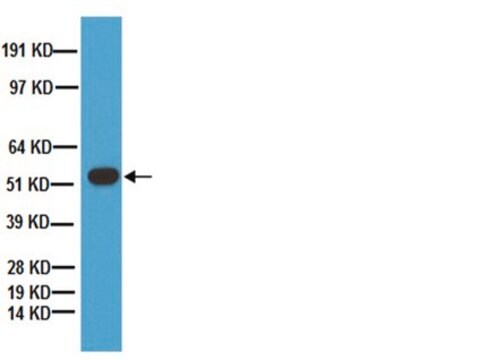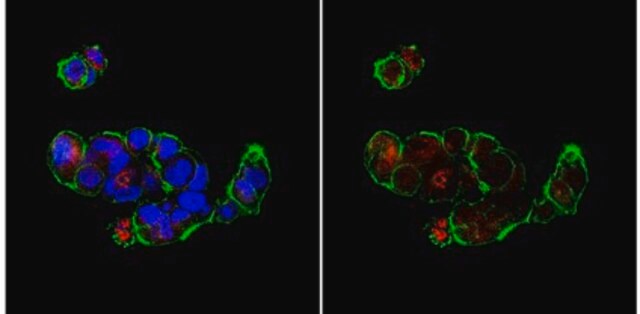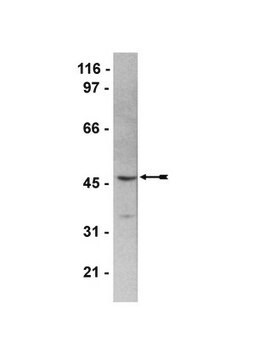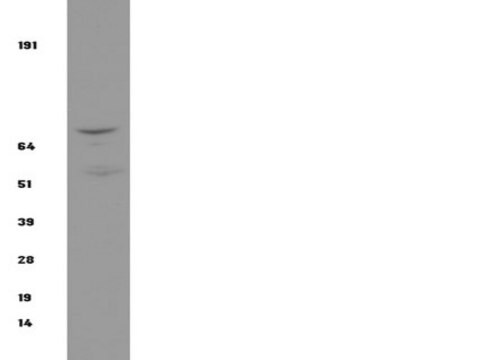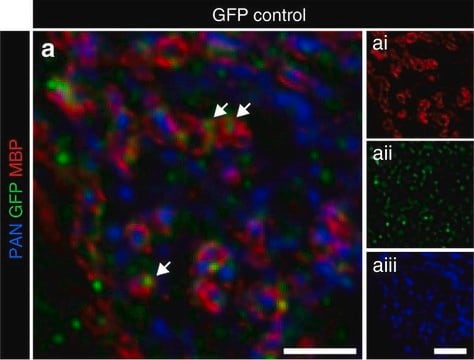ABC12
Anti-Bak (NT) Antibody
from rabbit, purified by affinity chromatography
Synonym(e):
Apoptosis regulator BAK, BCL2-antagonist/killer 1, BCL2-like 7 protein, Bcl-2 homologous antagonist/killer, Bcl-2-like protein 7, pro-apoptotic protein BAK
About This Item
Empfohlene Produkte
Biologische Quelle
rabbit
Qualitätsniveau
Antikörperform
affinity isolated antibody
Antikörper-Produkttyp
primary antibodies
Klon
polyclonal
Aufgereinigt durch
affinity chromatography
Speziesreaktivität
mouse, rat, human
Methode(n)
immunocytochemistry: suitable
immunohistochemistry: suitable
immunoprecipitation (IP): suitable
western blot: suitable
NCBI-Hinterlegungsnummer
UniProt-Hinterlegungsnummer
Versandbedingung
wet ice
Posttranslationale Modifikation Target
unmodified
Angaben zum Gen
human ... BAK1(578)
Allgemeine Beschreibung
Spezifität
Immunogen
Anwendung
Immunoprecipitation Analysis: For unpurified antibodies. 10 µg from a previous lot immunoprecipitated Bak from 500 µg of NIH3T3 lysate.
Immunohistochemistry Analysis: 1:300 dilution from a previous lot detected Bak in kidney tissue.
Immunocytochemistry Analysis: 1:500 dilution from a previous lot detected Bak in HeLa, NIH/3T3, and A431 cells.
Qualität
Western Blot Analysis: 0.5 µg/ml of this antibody detected Bak on 10 µg of Hek293 cell lysate.
Zielbeschreibung
Verlinkung
Sonstige Hinweise
Sie haben nicht das passende Produkt gefunden?
Probieren Sie unser Produkt-Auswahlhilfe. aus.
Empfehlung
Lagerklassenschlüssel
12 - Non Combustible Liquids
WGK
WGK 1
Flammpunkt (°F)
Not applicable
Flammpunkt (°C)
Not applicable
Analysenzertifikate (COA)
Suchen Sie nach Analysenzertifikate (COA), indem Sie die Lot-/Chargennummer des Produkts eingeben. Lot- und Chargennummern sind auf dem Produktetikett hinter den Wörtern ‘Lot’ oder ‘Batch’ (Lot oder Charge) zu finden.
Besitzen Sie dieses Produkt bereits?
In der Dokumentenbibliothek finden Sie die Dokumentation zu den Produkten, die Sie kürzlich erworben haben.
Unser Team von Wissenschaftlern verfügt über Erfahrung in allen Forschungsbereichen einschließlich Life Science, Materialwissenschaften, chemischer Synthese, Chromatographie, Analytik und vielen mehr..
Setzen Sie sich mit dem technischen Dienst in Verbindung.

